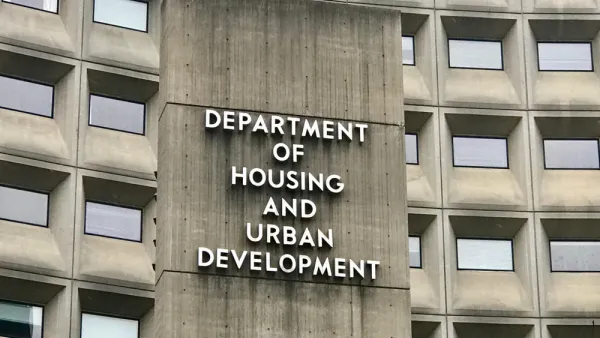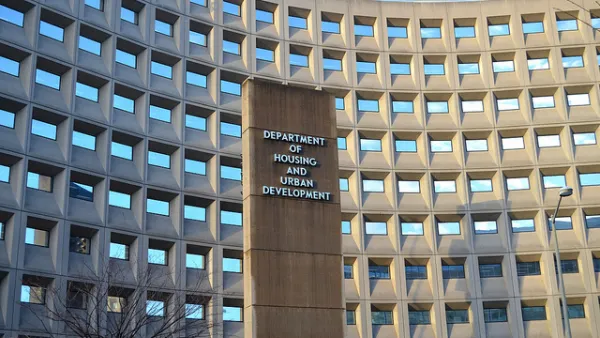After beefing up the 1968 Fair Housing Act, the feds are guiding cities to compliance.
Housing agencies nationwide are still adapting to new guidelines and more stringent enforcement issued last year by the Department Housing and Urban Development. NextCity fellow Oscar Perry Abello offers an optimistic take on how the Affirmatively Furthering Fair Housing (AFFH) rule will affect municipal housing policy.
AFFH clarifies and strengthens the 1968 Fair Housing Act, which "aims to combat segregation in American cities and tackle pockets of concentrated poverty that disproportionately impact people of color." It didn’t have much in the way of teeth in the past, Abello notes; the anti-segregation measures were seen by President Nixon and supporters as "forced integration."
Now HUD is requiring housing agencies to conduct "fair housing assessments," and intends to withdraw funding from municipalities that can’t prove their policies are non-discriminatory. That hasn’t always been the case, with failure to distribute affordable housing around cities at times resulting in "subsidized segregation."
To help cities meet these expectations, HUD is partnering with local and national non-profits to introduce a new mapping tool that visualizes geographic data on income, race and national origin, environmental quality, access to jobs and transportation, and more. "The hope was that easier and more visual access to the data, combined with deeper community engagement requirements, would start to reshape how state and local governments used their HUD resources," Abello explains.
AFFH, coupled with a Supreme Court decision expanding the definition of housing "discrimination," drew no shortage of controversy: One New York Times columnist even warned the two actions would drive middle-class whites, forced to accept affordable housing in their neighborhoods, to the Republican Party. Others worried the enforcement measures didn't go far enough to effect meaningful change.
Abello quotes experts who recommend that HUD avoid a one-size-fits all approach to implementing the new policy, instead allowing space for differing strategies based on the needs of particular communities:
Many have focused on the new rule’s potential to support more families on housing assistance with moving to wealthier neighborhoods, giving them access to better schools, cleaner air or better amenities. That may happen, but if the goal is to make sure ZIP code doesn’t determine access to fair housing and opportunity, a more balanced approach may be necessary.
Recently, for instance, HUD rejected a San Francisco plan to reserve nearly half of new affordable housing units for people already living in the neighborhood. The plan was crafted to help local black families remain in gentrifying areas of the city, but HUD categorizes all "neighborhood preference" plans as exclusionary.
More on the rules, and the non-profits helping cities to implement them, at NextCity.
FULL STORY: New HUD Rules Shouldn’t Leave Behind Disinvested Neighborhoods

Analysis: Cybertruck Fatality Rate Far Exceeds That of Ford Pinto
The Tesla Cybertruck was recalled seven times last year.

National Parks Layoffs Will Cause Communities to Lose Billions
Thousands of essential park workers were laid off this week, just before the busy spring break season.

Retro-silient?: America’s First “Eco-burb,” The Woodlands Turns 50
A master-planned community north of Houston offers lessons on green infrastructure and resilient design, but falls short of its founder’s lofty affordability and walkability goals.

Test News Post 1
This is a summary

Analysis: Cybertruck Fatality Rate Far Exceeds That of Ford Pinto
The Tesla Cybertruck was recalled seven times last year.

Test News Headline 46
Test for the image on the front page.
Urban Design for Planners 1: Software Tools
This six-course series explores essential urban design concepts using open source software and equips planners with the tools they need to participate fully in the urban design process.
Planning for Universal Design
Learn the tools for implementing Universal Design in planning regulations.
EMC Planning Group, Inc.
Planetizen
Planetizen
Mpact (formerly Rail~Volution)
Great Falls Development Authority, Inc.
HUDs Office of Policy Development and Research
NYU Wagner Graduate School of Public Service




























